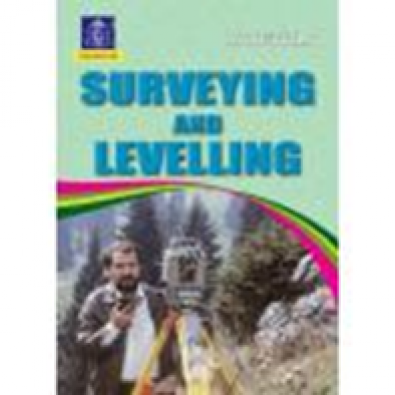This text-book provides an up-to-date knowledge of the basic principles of Surveying and Levelling. The subject matter is canvassed alongwith theory, variety of examples, various types of survey techniques; survey instruments used in the field; measurement of distances, both vertical and horizontal; the direction of lines or angles between the lines, where as various levelling instruments, principles, techniques, methods applied in levelling are given in this text book. The subject matter is expressed in a simple language and practical manner. The treatment is clear, methodical as well as interesting and easy to follow.
The entire subject matter is systematically arranged in the chapters like: Introduction, Scales, Linear Measurements of Distances , Chain Surveying and Ranging, Cross Staff Chain Surveying and Instruments, Compass Survey, Levelling, Contouring, Plane Table Survey, Computation of Areas, Computation of Volumes, Minor Instruments, Theodolite, Permanent Adjustments of Levels, Tacheometric Surveying, Circular Curves, Transition Curves, Vertical Curves, Field Astronomy, Theory of Errors, Setting Out Works, Hydrographic Surveying, Photographic Surveying, Modern Techniques of Surveying.
Appendix I contains Question Bank and Solved Problems. Total 215 theory as well as numerical questions mostly asked in viva and written examination of G.T.U. and other universities are included. Appendix II contains 181 Multiple Choice Questions and Appendix II showing Abbreviated Terms used in this book are added at the end of the book.
The book now contains:
*404 Self-explanatory and neatly drawn sketches
* 218 Solved problems
* 215 Solved problems
* 66 Useful tables.
* 480 Questions at the ends of chapters
The book should prove to be extremely useful to the Engineering students preparing for the Degree Examinations of all the Indian Universities, Diploma Examinations conducted by various Boards of Technical Education, Certificate Courses as well as for the A.M.I.E., U.P.S.C., G.A.T.E., I.E.S. and other similar competitive and professional examinations. It is also useful for the preparation of NATA (National Aptitude Test for Architecture), CEPT (Centre for Environmental Planning and Technology), SBST (School of Building Science and Technology), SID (School of Interior Design), AIEEE (Architecture), etc. It should also prove of interest to the practising professionals


